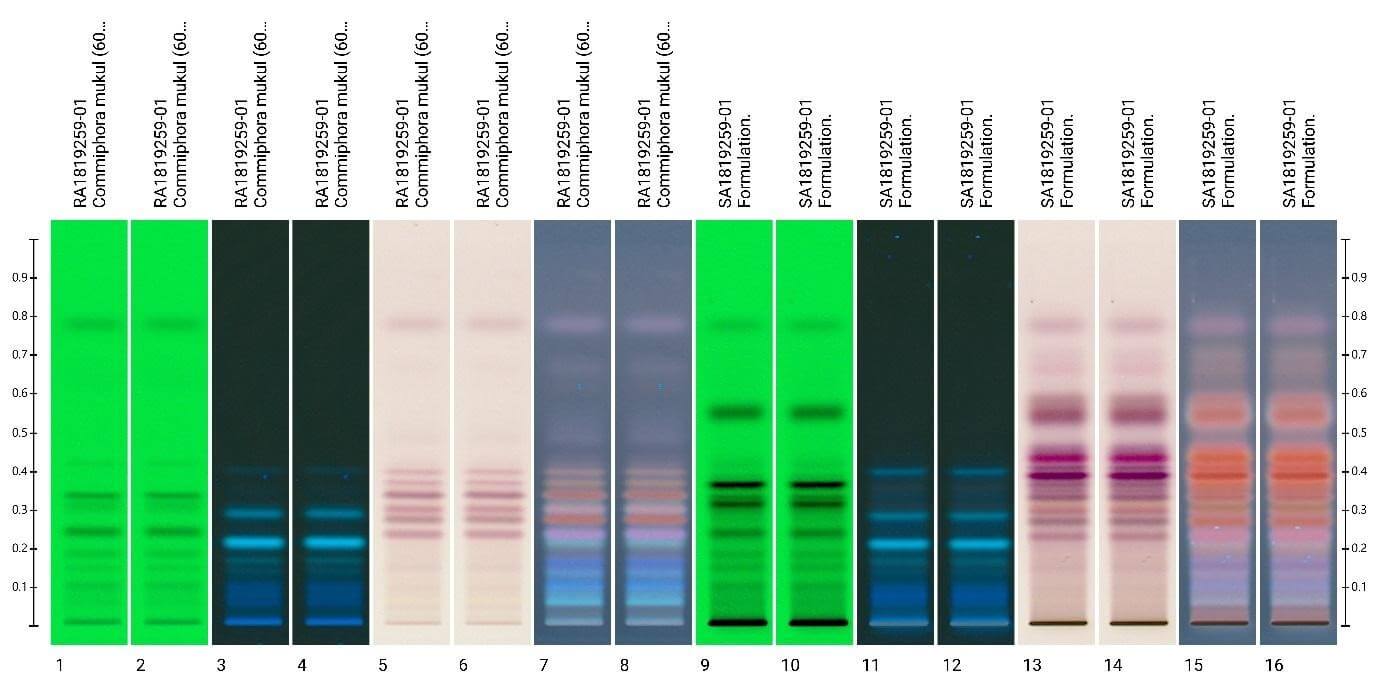HPTLC High Performance Thin Layer Chromatography is a modernized version of TLC technique. The underlying principle remains the same i.e. planar chromatography.
HPTLC gives better separation and resolution of bands compared to TLC technique. Also, quantification aspect is added in HPTLC which an analyst won’t achieve using conventional TLC.
HPTLC has a wide area of applications ranging from herbal, food, pharmaceuticals to forensics. Let us have a look at what kind of analyses can be done using CAMAG HPTLC.
Application of herbals involve HPTLC fingerprinting where there is no requirement of marker/standard. Fingerprint is the individual chromatographic track representing all the constituents in a plant sample. This allows us to differentiate at species to species level. Class of compounds is a phytochemical test confirming the presence of functional groups such as phenols, flavonoids, alkaloids and antioxidants etc. This type of analysis is qualitative.
Applications in the field of pharmaceuticals involve various types of analysis such quantification, validation studies, limit tests, impurity profiling, related substance and content uniformity test (CUT).
Forensic application involves poison investigations. Various food and FDA laboratories in India use HPTLC for detection of adulteration, aflatoxins and spurious compounds.
Other types of analyses which can be done using HPTLC involve stability studies and forced degradation studies. Effect directed analysis which involves DPPH assay (antioxidant assay) and bioautography.
Hyphenation is one useful tool which combines two unique chromatographic techniques to give best output. Double confirmation using HPTLC-MS is possible. This facilitates identification of unknown compounds without any tedious sample clean up.
Therefore, we can conclude that the analytical field of chromatographic technique is enormously useful for different types of sample and matrixes.






0 Comments